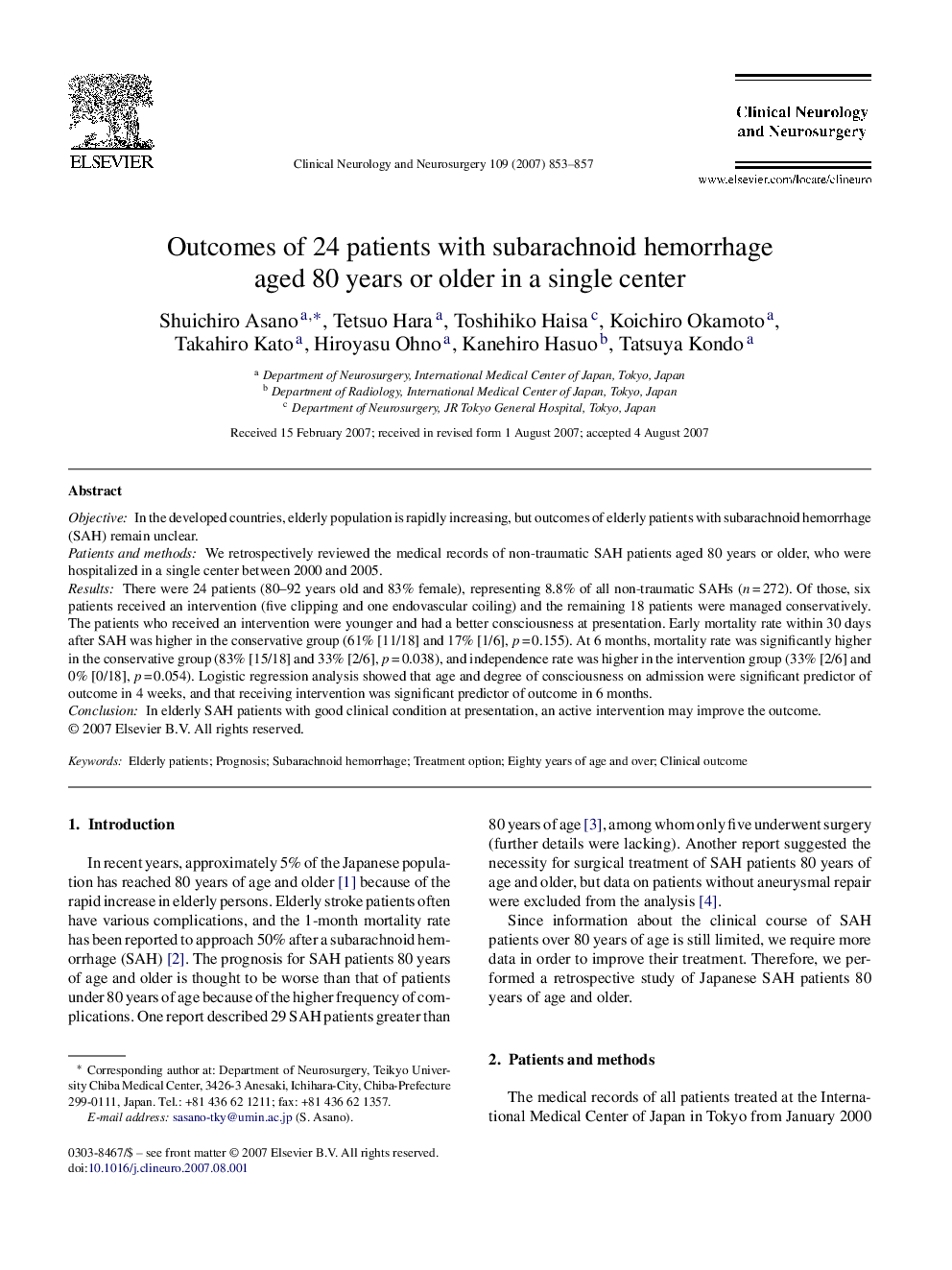| Article ID | Journal | Published Year | Pages | File Type |
|---|---|---|---|---|
| 3041950 | Clinical Neurology and Neurosurgery | 2007 | 5 Pages |
ObjectiveIn the developed countries, elderly population is rapidly increasing, but outcomes of elderly patients with subarachnoid hemorrhage (SAH) remain unclear.Patients and methodsWe retrospectively reviewed the medical records of non-traumatic SAH patients aged 80 years or older, who were hospitalized in a single center between 2000 and 2005.ResultsThere were 24 patients (80–92 years old and 83% female), representing 8.8% of all non-traumatic SAHs (n = 272). Of those, six patients received an intervention (five clipping and one endovascular coiling) and the remaining 18 patients were managed conservatively. The patients who received an intervention were younger and had a better consciousness at presentation. Early mortality rate within 30 days after SAH was higher in the conservative group (61% [11/18] and 17% [1/6], p = 0.155). At 6 months, mortality rate was significantly higher in the conservative group (83% [15/18] and 33% [2/6], p = 0.038), and independence rate was higher in the intervention group (33% [2/6] and 0% [0/18], p = 0.054). Logistic regression analysis showed that age and degree of consciousness on admission were significant predictor of outcome in 4 weeks, and that receiving intervention was significant predictor of outcome in 6 months.ConclusionIn elderly SAH patients with good clinical condition at presentation, an active intervention may improve the outcome.
